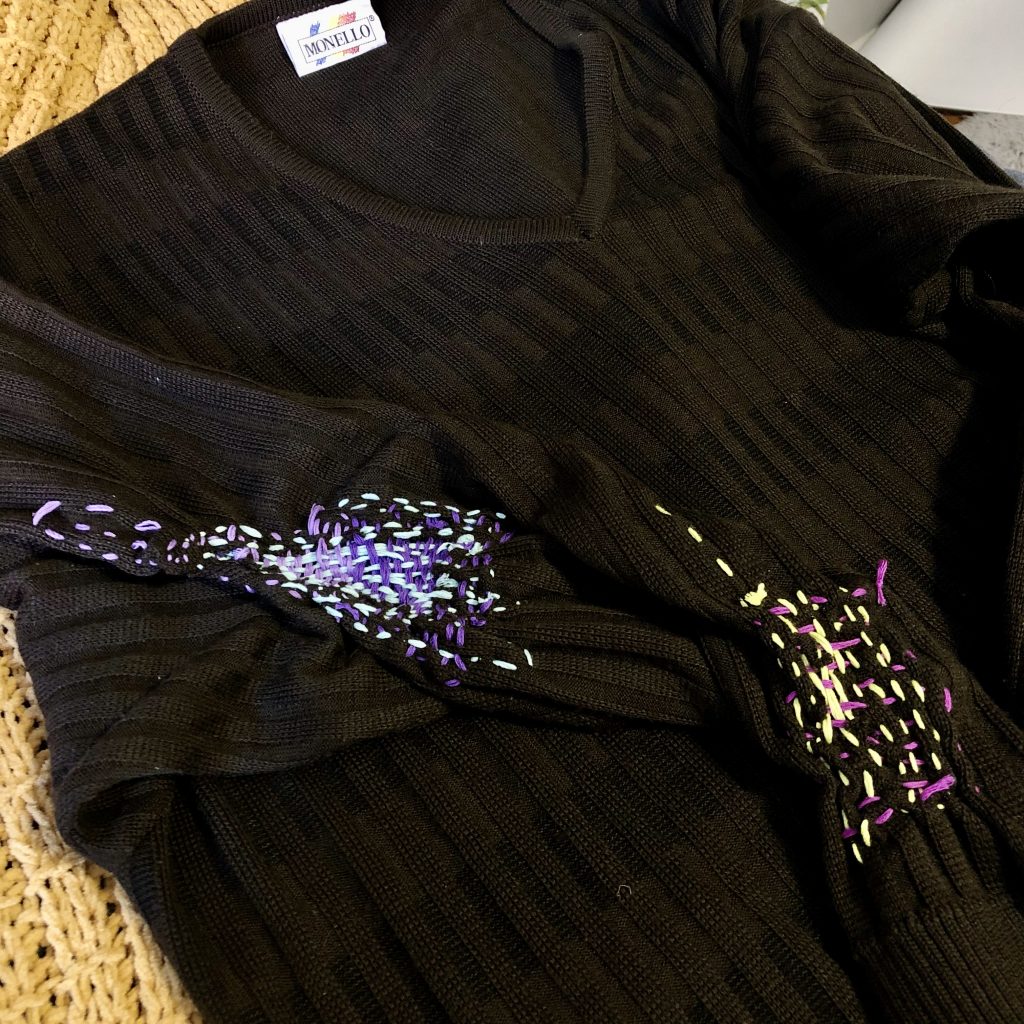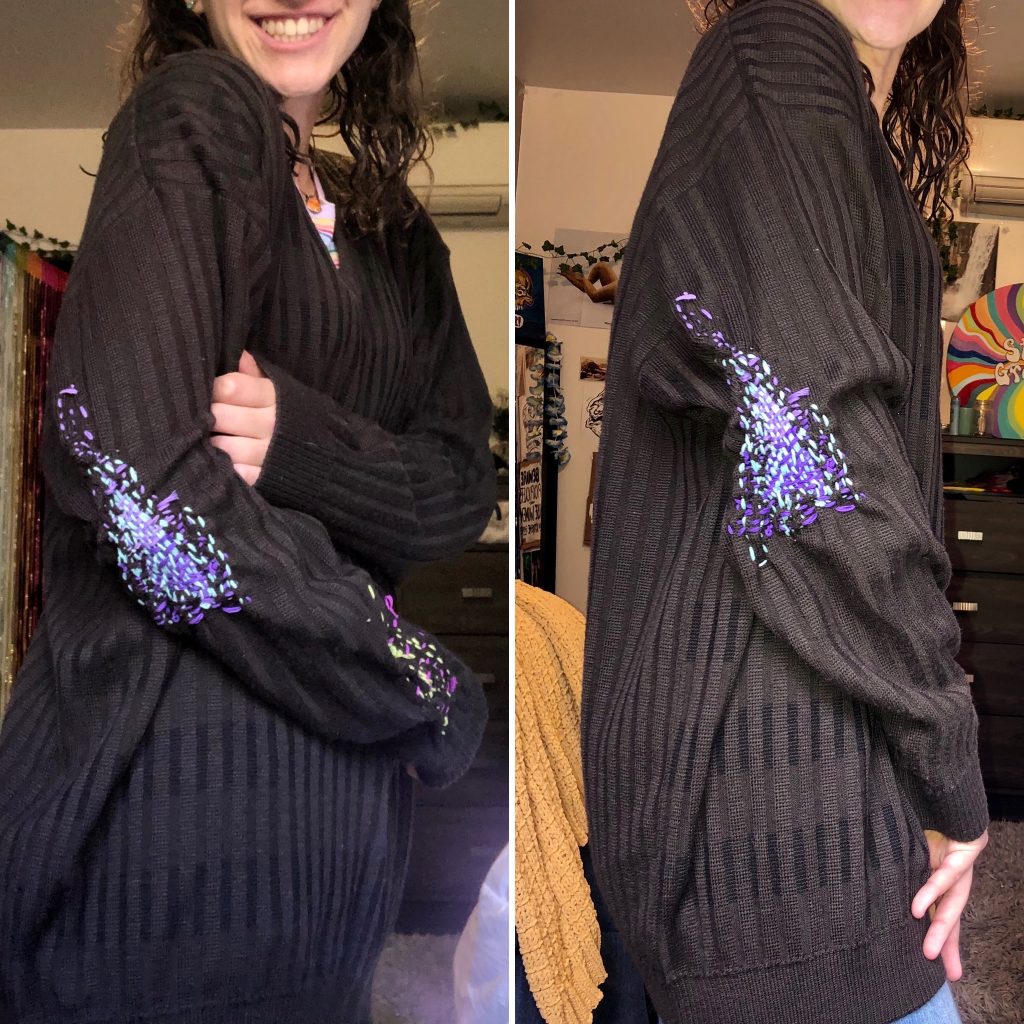Transforming my plain brown sweater with mending is still an ongoing project, but I’m learning more and more along the way. When considering the placement for the second hole, I thought about how I use sweaters and about which areas tend to experience the most wear and tear. Even though I am the one fabricating the holes to mend, I’ve decided to strategically place them in spaces that emphasize the sweater’s functionality.
I put the sweater on and lived in it for a little bit, and I marked areas that I found received the most action either through tugging, bunching, or rubbing with a sharpie. Some of these included my elbow, sleeve cuff, shoulder, and left hip. I want to highlight each of these areas with darning to give them personality, and so for my second mending, I went for a larger elbow patch.

I stuck with using embroidery floss because that worked well, and I experimented with threading different string counts through my needle to make thinner stitches. I also played with changing color halfway through the patch to attempt to create a subtle gradient. I like the visual effect a dark purple running stitch transitioning into a lighter purple as the shape of the patch narrows.
I am sticking with choosing colors that starkly contrast the dark brown sweater, and I enjoy the texture darning provides. It is still challenging to hold the fabric in place while running stitches, and I might find a better way to keep the shape that doesn’t involve sticking a mason jar in the sleeve. This will be especially helpful as I move into other areas of the sweater.

I was surprised by the organic feeling and quality of the mended patches. I’ve found that they move and morph into the rest of the fabric in very interesting ways. Their appearance changes while I wear the sweater, and it will be exciting to see how my view changes over time.
